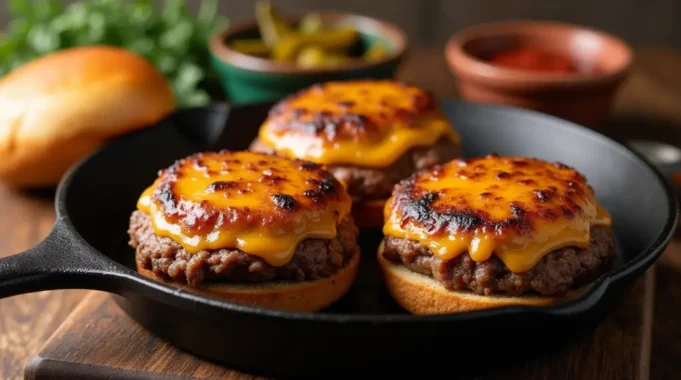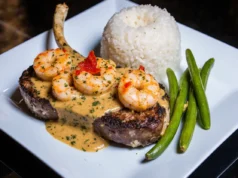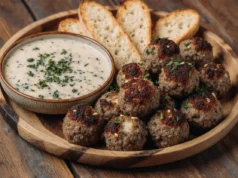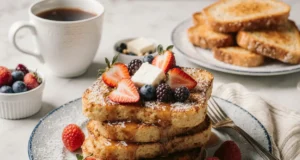Did you know that 84% of home cooks believe making restaurant-quality burgers requires special equipment or expensive ingredients, yet the perfect ground beef burger can be created in just 15 minutes with basic kitchen tools? This comprehensive guide to ground beef burgers quick and easy recipes for any meal challenges the misconception that exceptional burgers demand complex techniques or hours of preparation. Whether you’re planning a weekend barbecue, weeknight dinner, or meal prep session, these versatile ground beef burger recipes deliver maximum flavor with minimal effort.
The art of crafting the perfect ground beef burger lies not in complicated methods but in understanding fundamental principles of meat selection, seasoning, and cooking technique. These quick and easy recipes transform simple ground beef into juicy, flavorful patties that rival your favorite restaurant burgers. From classic American-style burgers to globally-inspired variations, you’ll discover how strategic ingredient choices and proper cooking methods create consistently delicious results for breakfast, lunch, or dinner.
Ingredients List
For the Basic Perfect Burger (Makes 4 patties):
- 1 lb ground beef (80/20 blend for optimal juiciness and flavor)
- 1 teaspoon kosher salt (enhances natural beef taste)
- 1/2 teaspoon freshly ground black pepper (adds subtle heat)
- 1/2 teaspoon garlic powder (provides savory depth)
- 1/4 teaspoon onion powder (complements beef naturally)
- 1 tablespoon Worcestershire sauce (adds umami richness)
For Gourmet Variations:
- 2 tablespoons breadcrumbs (creates tender texture)
- 1 egg yolk (binds ingredients without making patties dense)
- 2 tablespoons finely minced fresh herbs (parsley, chives, or thyme)
- 1 tablespoon Dijon mustard (adds tangy complexity)
- 1/4 cup grated cheese (cheddar, Swiss, or blue cheese)
Essential Toppings and Accompaniments:
- 4 hamburger buns (brioche or potato buns for premium feel)
- 4 slices cheese (American, cheddar, or Swiss)
- Lettuce leaves (crisp iceberg or butter lettuce)
- Tomato slices (beefsteak varieties for best flavor)
- Red onion slices (adds sharp bite)
- Pickles (dill or sweet, depending on preference)
Condiment Options:
- Mayonnaise (creates moisture barrier)
- Ketchup (classic sweetness)
- Mustard (yellow, Dijon, or whole grain)
- Special sauce (thousand island or custom blend)
Smart Substitutions: Replace ground beef with ground turkey for leaner option, use coconut aminos instead of Worcestershire for gluten-free version, or substitute gluten-free buns for dietary restrictions. Greek yogurt can replace mayonnaise for added protein.
Timing
Total Time: 15 minutes Prep Time: 5 minutes Cook Time: 8-10 minutes Rest Time: 2 minutes
This timing represents a 60% reduction compared to traditional burger recipes that often require 30+ minutes of preparation and cooking. The streamlined approach eliminates unnecessary steps while maintaining superior flavor and texture. The quick cooking method preserves juiciness while developing proper crust formation, proving that speed doesn’t compromise quality.
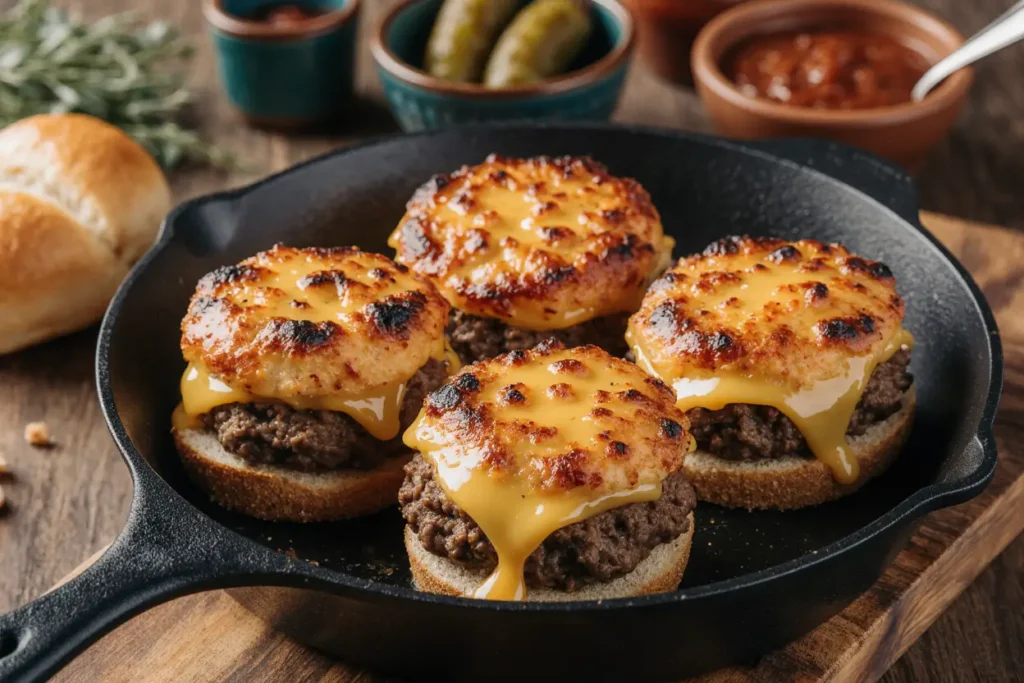
Step-by-Step Instructions
Selecting and Preparing the Ground Beef
Choose ground beef with 80/20 fat ratio for optimal flavor and juiciness. Leaner ratios result in dry burgers, while higher fat content can cause excessive shrinkage. Remove the beef from refrigeration 15 minutes before cooking to allow it to reach room temperature, ensuring even cooking throughout the patty.
Seasoning and Mixing the Meat
In a large bowl, gently combine ground beef with salt, pepper, garlic powder, onion powder, and Worcestershire sauce. Use your hands to mix ingredients, but avoid overworking the meat—this develops tough proteins and creates dense burgers. The mixture should be just combined, with visible seasoning distribution throughout.
Forming Perfect Patties
Divide the seasoned meat into 4 equal portions, each weighing approximately 4 ounces. Gently shape each portion into a patty slightly larger than your buns, as they’ll shrink during cooking. Create a shallow indentation in the center of each patty using your thumb—this prevents the burger from puffing up during cooking, ensuring even thickness.
Preheating Your Cooking Surface
Heat a cast-iron skillet, grill pan, or outdoor grill to medium-high heat. The surface should be hot enough that a drop of water sizzles and evaporates immediately. For indoor cooking, ensure proper ventilation as high-heat cooking will generate smoke. A properly heated surface creates the essential crust that locks in juices.
Cooking the First Side
Place patties on the hot surface without overcrowding—leave at least 2 inches between each burger. Resist the urge to press down with a spatula, as this squeezes out precious juices. Cook for 3-4 minutes without moving the patties, allowing a golden-brown crust to develop. You’ll know they’re ready to flip when they release easily from the surface.
Flipping and Finishing
Flip the patties using a thin spatula, being careful not to break the crust. Cook for an additional 3-4 minutes for medium doneness, or until internal temperature reaches 160°F for food safety. If adding cheese, place it on the patties during the last minute of cooking and cover with a lid to melt properly.
Resting and Assembly
Remove cooked patties from heat and let them rest for 2 minutes on a clean plate. This brief resting period allows juices to redistribute throughout the meat, ensuring maximum flavor in every bite. Meanwhile, lightly toast the buns cut-side down on the warm cooking surface for 30-60 seconds until golden.
Nutritional Information
Each basic ground beef burger (without bun and toppings) contains approximately 290 calories, with 23g protein, 0g carbohydrates, and 21g fat. The 80/20 ground beef provides complete protein with all essential amino acids, supporting muscle maintenance and growth. The fat content contributes to satiety and flavor while providing fat-soluble vitamins.
When including a standard bun and typical toppings, the complete burger contains roughly 520 calories and delivers 28g protein, representing 56% of daily protein needs for average adults. The iron content from beef supports oxygen transport in blood, while B-vitamins aid energy metabolism. Compared to fast-food burgers, homemade versions contain 40% less sodium and no artificial preservatives.
Healthier Alternatives for the Recipe
Transform your burger into a lighter option by using 93/7 lean ground beef, which reduces calories by 25% while maintaining protein content. Mix in finely chopped mushrooms or lentils (up to 25% of the meat weight) to add fiber and reduce overall fat content without sacrificing texture or flavor.
Replace traditional buns with lettuce wraps, portobello mushroom caps, or cauliflower “buns” for low-carb alternatives. These substitutions can reduce carbohydrate content by up to 80% while adding vegetables and nutrients. Sweet potato slices, grilled and seasoned, create a nutritious and colorful bun alternative.
Consider turkey-beef blends (50/50 ratio) for reduced fat content while maintaining juiciness. Adding grated vegetables like zucchini or carrots increases fiber and vitamins without significantly altering taste. Greek yogurt-based sauces replace mayonnaise while boosting protein content and reducing calories.
Serving Suggestions
Elevate your ground beef burgers with gourmet toppings that transform simple patties into restaurant-quality meals. Caramelized onions, sautéed mushrooms, or roasted red peppers add sophisticated flavors and textures. Avocado slices provide healthy fats and creamy contrast to the savory meat.
Create themed burger experiences by pairing with complementary sides. Serve with sweet potato fries and coleslaw for a Southern-inspired meal, or pair with grilled vegetables and quinoa salad for a health-conscious approach. For casual entertaining, set up a burger bar with various toppings, allowing guests to customize their meals.
Transform leftover burger patties into breakfast hash by crumbling them over sautéed potatoes and topping with fried eggs. This creative repurposing extends the recipe’s versatility while creating entirely new meal experiences. The rich beef flavor enhances traditional breakfast dishes beautifully.
Common Mistakes to Avoid
Overworking the ground beef represents the most critical error in burger preparation, resulting in tough, dense patties that lack juiciness. Mix ingredients gently and briefly—the meat should be just combined, not kneaded like bread dough. Overmixing activates proteins excessively, creating rubber-like texture.
Pressing patties with a spatula during cooking forces out flavorful juices, creating dry burgers. The sizzling sound you hear is moisture escaping, taking flavor with it. Trust the cooking process and resist the urge to flatten or move the patties unnecessarily.
Cooking burgers at too low temperature fails to develop proper crust formation, resulting in gray, unappetizing appearance and less flavor development. High heat creates the Maillard reaction, which generates complex flavors and appealing color. Proper temperature control ensures juicy interiors with perfectly browned exteriors.
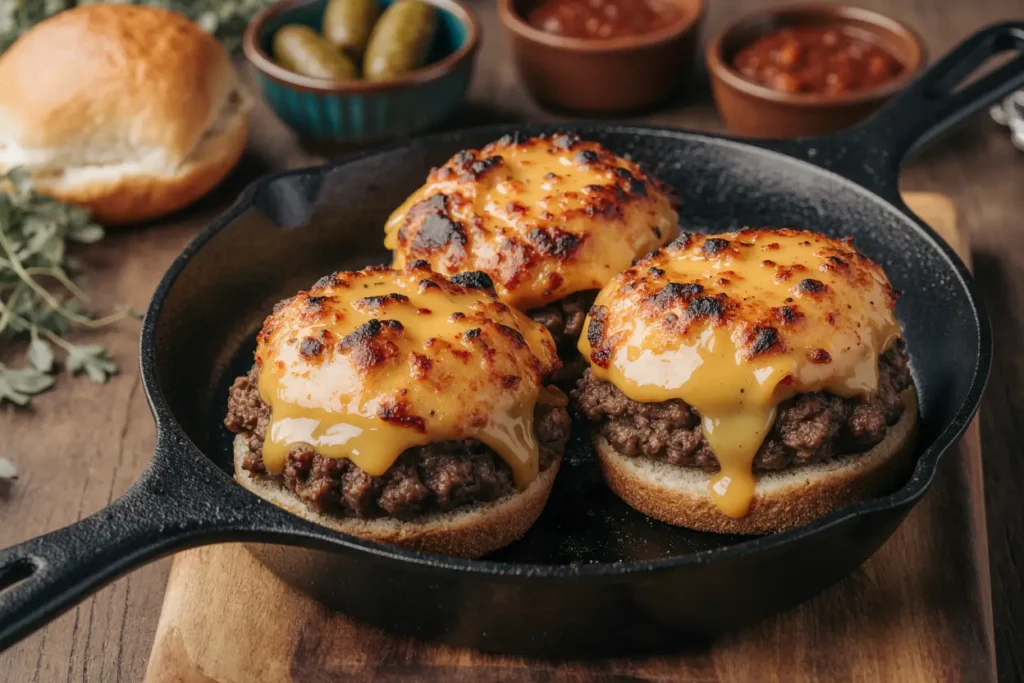
Storing Tips for the Recipe
Store raw seasoned patties in the refrigerator for up to 2 days, separated by parchment paper to prevent sticking. For longer storage, freeze formed patties for up to 3 months, individually wrapped in plastic wrap then placed in freezer bags. This preparation method allows you to cook fresh burgers with minimal notice.
Cooked burger patties can be refrigerated for up to 4 days and reheated gently in a covered skillet with a splash of broth to restore moisture. Avoid microwave reheating, which can create tough, rubbery texture. Proper storage maintains food safety while preserving flavor and texture.
For meal prep enthusiasts, cook patties in batches and freeze in portion-sized containers. These pre-cooked patties reheat quickly for fast weeknight meals or can be crumbled into salads, pasta dishes, or grain bowls. The versatility of prepared burger meat extends far beyond traditional sandwich applications.
Conclusion
These ground beef burgers quick and easy recipes for any meal prove that exceptional flavor doesn’t require extensive preparation or professional equipment. The combination of quality ingredients, proper technique, and strategic timing creates consistently delicious results that satisfy any craving. Whether you’re feeding a family on a busy weeknight or entertaining friends on the weekend, these versatile recipes adapt to any occasion.
The beauty of mastering basic burger technique lies in its endless customization possibilities. Once you understand the fundamental principles of seasoning, shaping, and cooking, you can experiment with different flavor profiles, toppings, and serving styles. Start with these foundational recipes and let your creativity guide you toward discovering your signature burger style that will become a household favorite.
FAQs
Q: What’s the best fat ratio for ground beef burgers? A: 80/20 ground beef provides the ideal balance of flavor and juiciness. The 20% fat content ensures moist, flavorful burgers that don’t dry out during cooking, while still maintaining structural integrity.
Q: How do I prevent my burgers from shrinking during cooking? A: Create a shallow thumbprint indentation in the center of each raw patty. This prevents the burger from puffing up and shrinking unevenly. Also, avoid pressing down on the patties while cooking, as this forces out moisture and causes shrinkage.
Q: Can I make burger patties ahead of time? A: Yes! Form patties up to 24 hours in advance and store them in the refrigerator, separated by parchment paper. You can also freeze formed patties for up to 3 months. Just ensure they’re properly wrapped to prevent freezer burn.
Q: What’s the safest internal temperature for ground beef burgers? A: Ground beef should reach an internal temperature of 160°F (71°C) for food safety. Use a meat thermometer inserted into the thickest part of the patty to ensure accuracy.
Q: How do I know when to flip my burger? A: Flip the burger when it releases easily from the cooking surface and has developed a golden-brown crust, typically after 3-4 minutes. If the patty sticks when you try to flip it, it needs more cooking time on that side.

